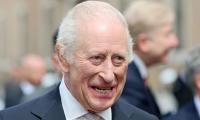The fate of the textile sector should serve as an indicator to the government of the folly of its macroeconomic reforms. In its second mini-budget, the PTI government had claimed that it was laying the grounds for a macroeconomic framework that would be favourable to industrial growth, while making sure that the state was reducing its fiscal expenditure and internal and external liabilities. The trouble has been that the government’s own macroeconomic reforms have gone against its stated promises. It claimed that it would support industrial growth through loans, but increased the SBP base rate to over 10.25 percent, which is not sustainable for anyone who wants to invest in Pakistan’s textile sector.
This meant that its lofty promises of increasing the amount of productive debt in the economy – that is: debt spent to increase industrial processes and spur economic growth – did not have the macroeconomic policy environment in which investors would be willing to take up the expansion of their businesses. Coupled with the fact that new loans were barely taken by investors during the time of historically low interest rates in the PML-N government, the likelihood that an increase in interest rates would increase borrowing by investors goes against any economic logic accepted within the field.
With the opening results of its plan not where they should be, the government is attempting to rectify its folly. It has expanded the mechanism to bypass both the interbank and commercial rates of borrowing. Instead, the government will expand the credit limit for the Export Financing Scheme and Long Term Financing Facility, both of which offer industrialists loans at three and five percent mark up each. The credit limit of the EFS has been increased from Rs226 billion to Rs400 billion, while the limit for the LTFF has been doubled from Rs103 billion to Rs200 billion for investments in the textile sector. On paper, these look to be good initiatives, but it needs to
be recognised that they are the result of poor planning. While a government is within its right to offered subsidised interest rates, the difference cannot be so jarring. With the depreciation of the Pakistani rupee, the cost of financing investment in textile has gone up significantly, which runs counter to the logic given for the move. While it is true that the question of balancing debt and growth is one that has bogged many economists in the last century, the current set of measures appear to be supporting neither. Debt is increasing while growth is decreasing. This puts significant questions on the larger macroeconomic plan being followed right now.
For five decades, since Soviet invasion of Afghanistan in 1979, Pakistan has hosted millions of Afghans
Doubts about PSL’s overall impact on Pakistan’s cricket scene seem to be growing
Current wave of unrest stems from deep-seated perception of exclusion from Pakistani mainstream
Critics see it as yet another tactic to suppress voice of nation’s minorities, particularly Muslims
According to Swati, despite Imran's criticism of military, efforts are underway to restore communication
Pakistan will need a more measured approach, even if it ultimately results in naught







